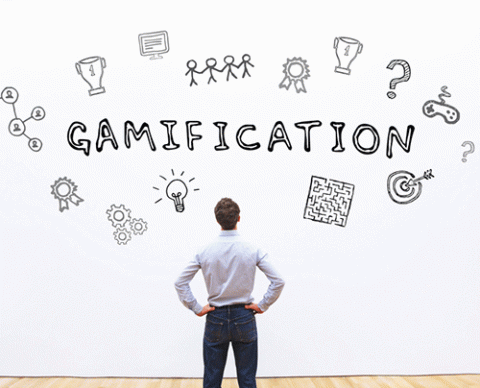Gamification in the warehouse: Your best friend or worst nightmare?

In 2020, the global gamification market was valued at $10.19 million, and is expected to reach $38.42 million by 2026.
The reason for this exponential growth? The answer lies in your hand, maybe even on the device you’re reading this article. Yup, the proliferation of smartphones and mobile devices has directly created a vast base for the gamification market.
This rapid growth is also supported by the increasing realization that humans love games. The gamification of systems as a method to architect human behavior, in order to induce innovation, productivity, or engagement is on the rise. The use of gamification systems has also extended beyond its traditional scope of marketing tools and into the workplace as an effective means to motivate employees.
What is gamification in the workplace?
Contemporary scientists strongly believe play is a major part of the human experience. It’s an integral part of human development as children, and it turns out, just as important in adults. From sports to video games to the gaming apps on your phone, gaming is a critical activity to our mental and physical well-being.
Implementing gaming in business strategy and education has gained momentum in recent years as organizations have realized the benefits. Imagine gaining points and achievements at school or at work, or being allowed to do the task at hand any way you want using your creativity and full potential.
When we talk about gamification at work, we’re basically talking about turning work activity into a more game-like experience. This way, processes like training and everyday tasks become more interesting and engaging. Think badges, virtual awards, and leaderboards, all connected to apps and software used in the workplace. For warehouses in particular, it makes a lot of sense. You’ve got a big team to motivate and keep engaged –– and they’re all using handheld or wearable software-enabled devices all day long.
Gamification for motivation & productivity
In 2018, the results from a gamification survey showed a clear influence on employee motivation and engagement from gamification. In that survey, 81% of respondents said that gamification provided a sense of belonging and purpose in the workplace. A year later, the numbers rose even higher.
It’s become increasingly evident that gamified software can affect employee psychology and even can be associated with feelings of happiness. As a matter of fact, the gamification engagement stats suggest that almost nine in 10 employees feel happier when they use gamified software at work.
But, not only does it seem to boost morale, it also appears to improve productivity. Employee gamification seems to be boosting competition and eagerness among 89% of the respondents of that same survey a year later in 2019. On top of that, another 89% clearly states that gamification makes them productive at work; a number which, compared to 2018, is higher by only 2%. But, compared to 2014, it’s higher by 10%.
From a management perspective, gamification can give greater transparency in assessing performance by relying less on bulky analytics tools. Management has a much easier time catching and adjusting productivity issues. Supervisors have access to data more consistently and quickly, with the ability to monitor benchmarks throughout the day on an individual team member level.
The downsides of gamification in the workplace
It’s worth considering that, despite the obvious advantages gamification in the workplace provides, there will be team members who aren’t motivated by competition. Unfortunately, in some instances, it can create opportunities for unfriendly competition and bullying across the organization.
By implementing well-meaning, team-building competition, you may unwittingly marginalize certain parts of the workforce who don’t care for gamification. A competitive culture can be problematic when implemented without proper staging and attention to detail. Putting point systems, leaderboards, and badges in place without creating thoughtful experiences that balance competition and collaboration can lead to adverse results.
To safeguard against potential negative outcomes, management should look at implementing gamification gradually, and with the individuals who would excel in the program first. The process needs to be well thought out and intentionally planned. For example, gamification shouldn’t be used as a tool to manipulate employees to work in a way they might not otherwise do.
There also has to be understanding from the management team about what is happening when goals are reached. This pilot approach will reveal unknown pitfalls and allow for ongoing improvement throughout the process of workforce integration.
There is a growing need to design thoughtful programs, which some companies have failed to consider before taking up this approach. While gamification has the potential to revolutionize the entire process of recruiting, onboarding, corporate leadership training, and HR compliance, the game design is crucial for achieving the best results.
Gamification in the warehouse
Though warehouse life is fun and exciting at times, logistics can be somewhat uninspiring. From a corporate culture perspective, gamification puts more of the natural human competitiveness into the environment that adds fun to the routine and motivates the team.
Also, gamification helps to set concrete goals and establish accountability on an individual and team basis, which can generate pride on the floor. By providing gamification in the warehouse, you can engage the workforce and create an atmosphere in which employees want to do a better job, thus improving productivity. This atmosphere, in turn, improves employee engagement and lower turnover, which is always good for the bottom line and the company’s reputation as a desirable employer.
Gabe Grifoni is CEO and founder of Rufus Labs.




